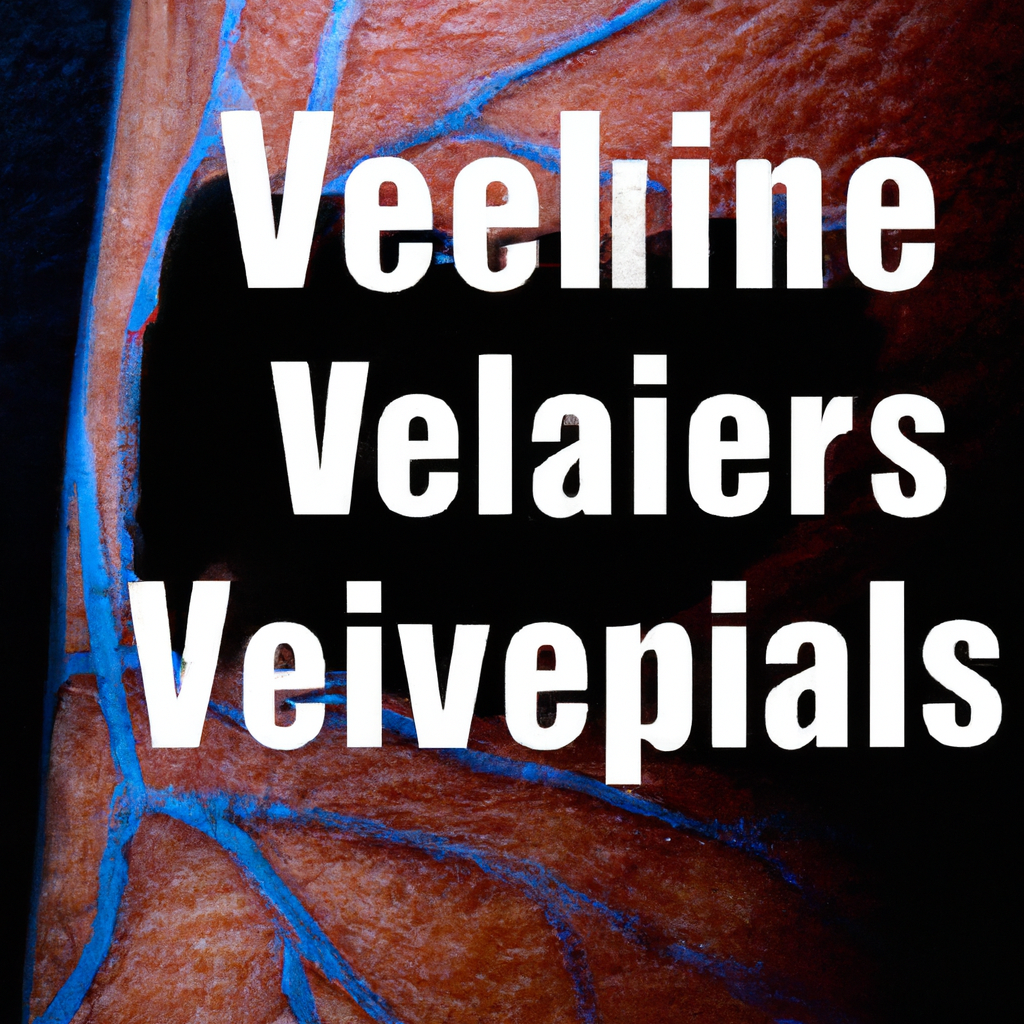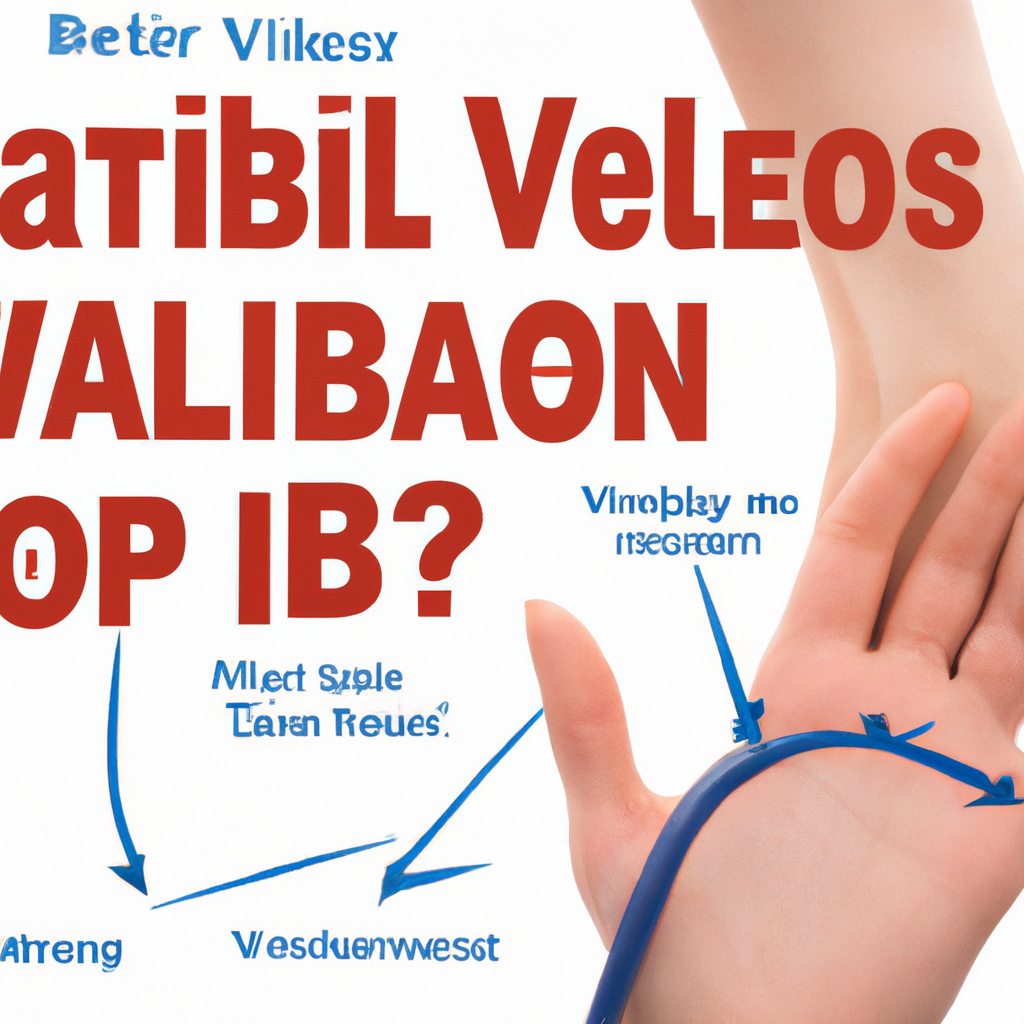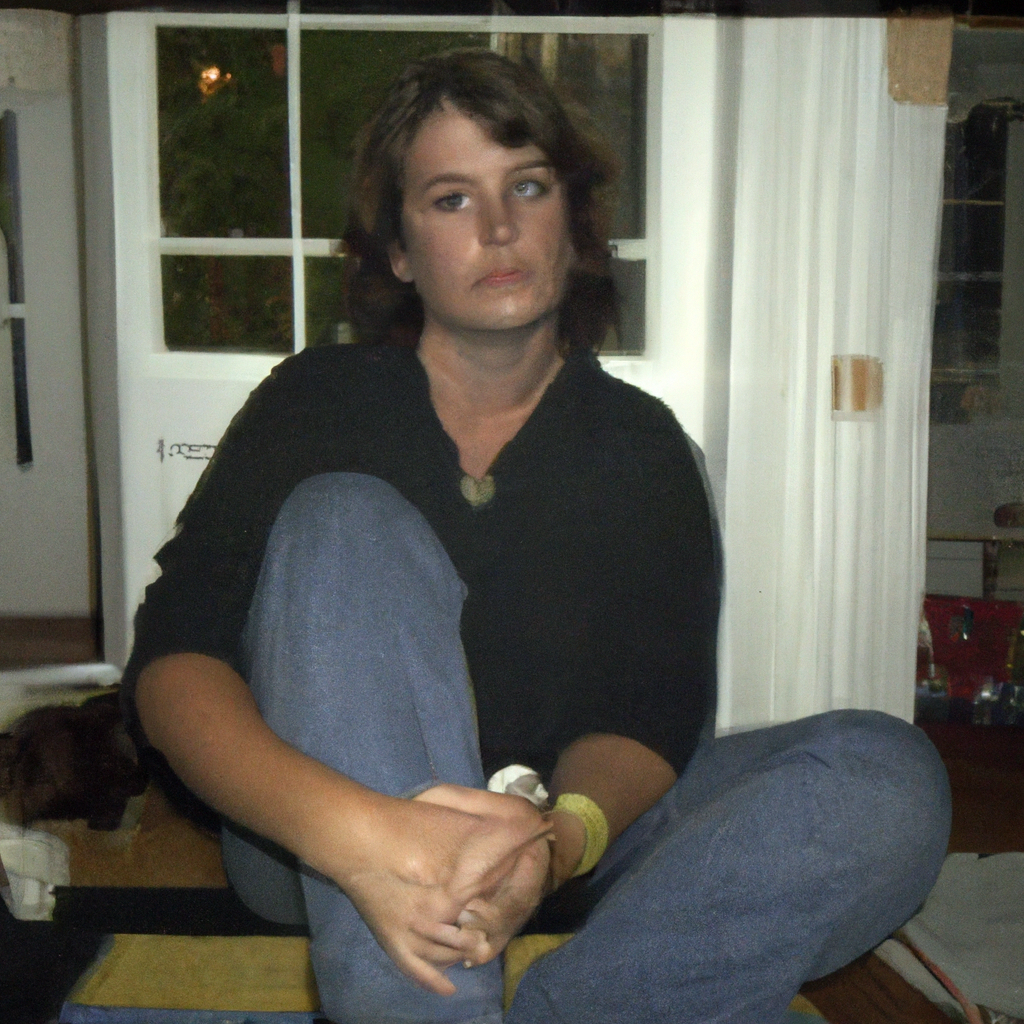Imagine your body as a bustling city, with veins acting like its winding roads—always under pressure, relentlessly supplying life-sustaining materials to the farthest corner. But sometimes, due to lifestyle choices, genetics or simply wear and tear, these vital networks suffer damage. And when our veins are clogged or compromised, it can lead to numerous, sometimes severe, health problems. But do these intricate carriers of life possess the magical ability to rebuild and repair themselves much like our city roads? That’s the unique mystery we’re about to unravel as we delve into the miraculous world of vein health. Dive in with us as we explore, “Do veins repair themselves?” in the upcoming paragraphs.
Table of Contents
- Understanding the Complex Structure of Veins
- What Happens When Veins Get Injured?
- Does the Human Body Self-Repair its Veins?
- Exploring Different Types of Vein Damage
- Revealing the Healing Process of Veins
- Enhancing Vein Recovery: Dietary and Lifestyle Changes
- Seeking Medical Intervention: When Home Healing Isn’t Enough
- Q&A
- Closing Remarks
Understanding the Complex Structure of Veins
Housed within the intricate framework of our bodies lies a vast network of conduits so sophisticated yet so crucial for the very essence of life – the venous system. Among all the systems that help us to function, the veins play a pivotal role, painted in red and blue throughout our anatomy. Acting as the returning path for blood after delivering nutrients to various organs, they deal with challenge and complexity at every turn. Breaking down the intricacies of these blood vessels not only pave the way for better understanding of our bodily functions but also sheds light on several diseases related to them.
Primarily, the venous system can be divided into deep veins and superficial veins. The deep veins usually run side by side with major arteries, while superficial veins are closer to the skin and are often visible. Deep veins are responsible for carrying most of our blood back to the heart. Lean muscle contractions regulate this flow, making the process highly efficient. Veins possess valves, which ensure the one-directional flow of blood and prevent it from flowing back.
- Superficial Veins: These veins are the ones that are visible under our skin. They serve as a minor part of our venous system. However, their proximity to the skin makes them more prone to sustain damage.
- Deep Veins: They aren’t visible from the surface of the skin and carry almost 90-95% of the total blood towards the heart. They are well protected hence less likely to sustain damage.
- Valves: They save our venous system from becoming a chaotic battleground where blood might end up flowing in the wrong direction. Veins owing to gravity, face an uphill task (literally!) in ensuring blood reaches back to the heart for purification.
The entire landscape of the venous system is not only fascinating but also puts us in awe of the inches of wonder stretched beneath our skin. It drives home the point of how intricate, complex, and unbelievably efficient our body is!
What Happens When Veins Get Injured?
Damage to our veins can have an impact on our circulatory system’s overall function. Veins, much like arteries, can get injured from trauma, vein puncture (like during a blood test), or surgery. When this happens, the body springs into action with a complex series of events designed to help the healing process. It’s an intricate dance, a blend of biology and physics that aims to restore the vein’s function as quickly and effectively as possible.
Initially, blood platelets congregate at the site of injury, binding together to form a platelet plug – a type of ‘patch’ to halt the outflow of blood. This phase is known as the platelet phase and kickstarts the body’s response to the wound. Following this, a number of proteins in the blood – collectively known as clotting factors – come into play in a sequence of events referred to as the coagulation phase:
- The proteins in the blood initiate a chemical reaction chain.
- This triggers the formation of a stable fiber mesh (fibrin clot) at the injury site.
- This meshwork traps more platelets and red blood cells, solidifying into a clot and effectively sealing the wound.
Soon after, the body begins the healing phase, where fresh cells regenerate and reestablish the vein’s structure and function. It’s fascinating to see how the body employs its own ’emergency response unit’ when a vein gets injured, much like a well-trained team of paramedics at an accident site.
Does the Human Body Self-Repair its Veins?
A remarkable aspect of human physiology is our body’s inherent ability to initiate self-repair and heal tissue damage. This cellular rejuvenation process extends to all bodily components, blood vessels inclusive. Many often wonder if veins damaged by injury, age, or illness have the capacity to mend themselves. In actuality, the body does have a natural recovery system in place for veins.
Veins possess a layer of epithelial cells on the inside and smooth muscle cells on the outside, enabling them to expand or constrict as needed. When these cells experience injury, the body launches a repair process. Initially, platelets collect around the wounded area to form a clot, preventing further blood loss. Then, fibroblasts – cells integral for wound healing – move in to help reconstruct the vessel’s damaged structure. These cells create a framework for new tissue growth by producing collagen, a protein that aids elasticity and strength in veins. Over time, this structure matures and reforms the original vein, albeit with potential changes in flexibility or thickness.
Exploring Different Types of Vein Damage
Many often neglect the condition of their veins until a problem arises, but proactive care and understanding can prevent significant issues down the line. Vein damage can occur in various forms, each having its own set of symptoms and complications that can impact your health and daily life quality. Let’s take a closer look at some of the most common types of vein damage we encounter.
Varicose Veins and Spider Veins are perhaps the most recognizable forms of vein damage. They appear as swollen, twisted veins often on the legs and feet. While varicose veins are more prominent and can cause ache, spider veins are usually just cosmetic concerns. Deep Vein Thrombosis or DVT is a serious condition where blood clots form in the deep veins of the body, frequently the leg, leading to potential fatal complications like pulmonary embolism. Next, the Chronic Venous Insufficiency, occurs when your leg veins do not allow blood to flow back up to the heart. This particular condition can cause swelling, skin discoloration, and ulcers. Finally, Venous Stasis Ulcers are a result of poor blood circulation in the lower legs, causing slow healing sores or wounds.
Revealing the Healing Process of Veins
In the enchanting realm of human anatomy, veins play a significant role that often goes underappreciated. These vital blood vessels, grand highways for our circulatory system, embody resilience, undergoing numerous trials and tribulations, yet are remarkably proficient at self-repair. When damaged, be it through the prick of a needle or the arduous task of removing varicose veins, they employ intrinsic mechanisms to heal.
From a bird’s eye view, the healing process of veins might seem quite simple - one moment they are injured, the next, they appear healed. However, behind the curtains, the vein healing process is a spectacular physiological ballet that involves various stakeholders. Here is how the intricate process unfolds:
- Coagulation: This is the first response to a vein injury. The blood within our veins sets into motion a cascade of reactions that result in the formation of a blood clot or thrombus. This is more of an emergency plug to prevent excessive bleeding.
- Cell migration: Here is when the real mending starts. Our body now sends an army of specialized cells to the injury site which begin to repair the damaged vein wall.
- Regeneration: These cells gradually rebuild the vein wall, restoring its functionality while providing strength and flexibility.
- Reorganization: After the hard work of regeneration is complete, the clot gradually withers away. The vessels rearrange themselves, sliding back into the rhythm of normal blood flow.
Thus, the process of vein healing, while seamless on the outside, is a testament to the phenomenal capabilities of our body, reasserting the axiom, ‘The human body is the best picture of the human soul.’
Enhancing Vein Recovery: Dietary and Lifestyle Changes
Many individuals suffer from various conditions affecting their veins, such as chronic venous insufficiency and varicose veins. These venous conditions deteriorate one’s quality of life and may even lead to severe health complications over time if not well-managed. Sadly, surgical procedures and medication alone may not provide complete recovery or prevent the recurrence of such issues. Hence, it becomes vital to adopt dietary and lifestyle changes to enhance vein health and go a long way in aiding recovery or mitigating symptoms. Remember, you’re not alone in this fight, and it’s never too late to start making healthier choices.
Embarking on this journey entails incorporating heart-healthy foods into your everyday meals. Plenty of fruits and vegetables, lean proteins, high-fiber, and whole-grain products should be regular parts of your diet. Additionally, incorporating food items rich in Vitamin C & E, flavonoids, and naturally occurring Rutin can enhance vein health. Specifically, fruits like oranges, strawberries, and grapefruits, green leafy vegetables, nuts, seeds, olives, whole grains, and certain spices are advisable. Remember to drink plenty of water throughout the day, too. On the other hand, it is crucial to limit intake of foods high in sodium and saturated fats, processed food, as well as alcohol and caffeine.
Just as important as maintaining a balanced diet is an active lifestyle. Regular physical activities like walking, cycling, or swimming keep the leg muscles working and promote healthy blood flow. It’s recommended to have at least 30 minutes of moderate-intensity workout most days of the week. In the same vein, avoid prolonged sitting or standing, wear compression stockings if recommended, elevate legs whenever possible, and quit smoking. These lifestyle changes may seem simple, but their impact on enhancing vein health can be significant over time.
Seeking Medical Intervention: When Home Healing Isn’t Enough
There comes a point when the touch of a mother’s care, the warmth of a loved love’s comfort, or the potency of home recipes fails to bring the desired relief. Recognizing the signs when home healing ceases to be effective is absolutely crucial. There is an indecipherable line between home-based care and medical intervention, crossing which can result in unnecessary health problems as well as it can be life threatening.
Acknowledging the following signs could be a prompt that it’s time to seek medical help:
- Unabated Pain: Persistent pain, particularly intense and progressive in nature.
- Fever: High fever that lasts more than a couple of days or includes other severe symptoms.
- Difficulty in Breathing: Shortness of breath that persists or discomfort in chest that does not improve with rest.
- Vomiting or Diarrhea: Intense, chronic episodes that do not subside in a day or two, especially when accompanied by blood.
- Altered Consciousness: Unexplained changes in behaviour, confusion, dizziness or loss of consciousness.
These symptoms are broad indicators that may signify a range of health issues, and shouldn’t be perceived as an exhaustive list. Home healing must not be interchanged with negligence towards one’s body. Being equipped with the knowledge of when to switch gears can empower you to make timely decisions for you and your family, and possibly avoid serious health complications. Remember, when in doubt, it’s always safer to seek medical advice sooner rather than later.
Q&A
Q: Can the human body’s circulatory system self-heal in case of damage?
A: Absolutely! Our body is a master healer and our veins are part of that magic – it’s a fact to marvel at!
Q: How ?
A: Veins are like a city’s local traffic system – unceasing and efficient. When damaged, they facilitate their repair process by forming a clot to prevent bleeding while stimulating the growth of cells to repair the wound. It’s a complex series of synchronization and compromise!
Q: Can veins undergo significant self-repair, even in cases of severe injury?
A: Yes, veins can recover from serious damage but to a certain extent. Healing varies based on the extent of harm, lifestyle choices, available nutrients, and overall health of the individual. They’re resilient but, like all heroes, they have their limits.
Q: Is the process of vein repair a continuously ongoing one?
A: Yes, it is! Just like a city that never sleeps, your veins are always under maintenance. They are constantly regenerating and repairing, working to keep you at your best.
Q: Does age affect the ability of veins to self-repair?
A: Unfortunately, yes. Just as a town’s infrastructure may age, the body’s capability to repair decreases as we age. Aging veins may lose flexibility, become less efficient and heal at a slower rate.
Q: How can we support our body in maintaining healthy veins?
A: Support your veins by focusing on balanced nutrition, exercise, adequate rest, and hydration. Think of these as the city’s multivitamins – essential and supportive, promoting traffic flow and structural integrity!
Q: Is surgical intervention the only method to treat severely damaged veins?
A: Not always. Depending on the severity of the damage, medication, lifestyle changes or minimally invasive procedures might suffice. However, sometimes, like an old city bridge that needs a complete overhaul, surgical intervention may be required.
Q: Can people with vein diseases like Varicose Veins count on natural self-healing?
A: That can be a trickier road. While our veins are capable of self-repair, it’s important to seek professional medical advice for conditions like varicose veins. That path may require a little extra assistance.
Q: Will the self-repair capability of veins ensure a 100% recovery always?
A: Unfortunately, no. The body’s healing process is certainly remarkable, but it may not always result in perfect repair. Some damages may leave behind scars or functional changes in the veins. But, hey, even the best cities have a few potholes!
Q: Does stress impact the self-repair of veins?
A: Indeed, it does. Chronic stress can impact your overall health, and your veins are no different. Consider stress like congestion on the roads – it can slow down repair and regeneration, so try to keep your city’s traffic smooth!
Wrapping Up
As we skiff away from the riverbank of understanding, gleaming droplets of knowledge tucked safely within our memory’s craft, we leave behind the fascinating landscape of our vein network. An intricate arterial map pulsing with liquid life, ceaselessly knitting and nurturing, mending faults in tireless silence. Veins, it seems, are the hushed, diligent artisans of our bodies, sketching a healing folklore beneath our skin each moment. Our task, as the cartographers of our own health, is to respect and maintain this intricate system, and to trust in its ceaseless labor. So, we set sail for other curiosities, flicking each learned pebble back into the stream of our understanding, and listening for the echo that enlightens. For always, in the journey that is comprehending our bodies, every echo is a wisdom whispering: ‘learn more’.








